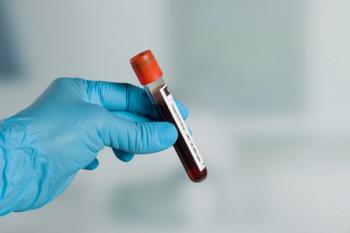
Migraine Headache: A Look at Current Treatments and the Pipeline
Migraine is a condition characterized mainly by severe and recurrent headaches. Approximately 12% of the general population experiences migraines, with a higher frequency in women than men.
Migraine is a condition characterized mainly by severe and recurrent headaches. Approximately 12% of the general population experiences migraines, with a higher frequency in
Due to the symptoms, over 90% of migraine sufferers made at least one visit to a doctor’s office or clinic and 50% went to the emergency room for treatment of migraine in the previous year. Additionally, 89% of employed responders to the survey said that their job performance was adversely affected by migraines and more than half missed at least 2 days of work per month.2
The
Level A: Medications that are established as effective and should be offered for migraine prevention
- Antiepileptic drugs (AEDs): divalproex sodium, sodium valproate, topiramate
- β-blockers: metoprolol, propranol, timolol
- Triptans: frovatriptan (for short term prevention)
Level B: Medications that are probably effective and should be considered for migraine prevention
- Antidepressants: amitriptyline, venlafaxine
- β-blockers: atenolol, nadolol
- Triptans: naratriptan, zolmitriptan (for short term prevention)
Level C: Medications that are possibly effective and may be considered for migraine prevention
- ACE inhibitor: Lisinopril
- Angiotensin receptor blockers: candesartan
- α-agonists: clonidine, guanfacine
- AEDs: carbamazepine
- β-blockers: nebivolol, pindolol3
Although the summarized guidelines listed previously use the term “effective” to describe certain drugs that can be taken to treat migraines, many patients don’t get adequate relief from these therapies. It’s estimated that less than half of patients taking currently available prophylactic migraine drugs demonstrate a 50% reduction in monthly migraine occurrences. In fact, these drugs were all developed for other diseases besides migraine.4
Calcitonin gene-related peptide (CGRP) blockers have shown promise as a mechanism of action for treating migraines in studies. Evidence has been found that CGRP is released during a migraine attack and it is theorized that it plays a part in causing migraines. CGRP drugs are given prophylactically and administered by subcutaneous or IV injection, depending on the individual product. Although they are not yet FDA approved, CGRP drugs have shown good efficacy in clinical trials and been well tolerated in terms of adverse events.4
Three CGRP agents have filed with the FDA for review with decisions regarding approval expected in 2018. These drugs are erenumab, fremanezumab, and galcanezumab. In late stage clinical trials, each of these products met the endpoint goal of a statistically significant reduction in mean monthly migraine headache days compared to placebo. Additionally, several other migraine headache drugs are in various stages of clinical trials but have not yet filed with the FDA.4,5
Migraine Headache Expected Upcoming FDA Decisions in 2018 4,5
Drug name
Manufacturer
Route of Administration
Dose Level in Late Stage Trials (mg)
PDUFA Date*
Erenumab
Amgen, Novartis
SubQ
70 and 140
5/17/18
Fremanezumab
Teva
SubQ
225 and 675
Regulatory action is anticipated by mid-2018.
Galcanezumab
Eli Lilly
SubQ
150
10/11/18 (estimated)
*PDUFA — Prescription Drug User Fee Act date is the deadline for the FDA to make a decision regarding approval. The FDA can make a decision before the PDUFA date.
Migraine headache is a
Even more resources pertaining to headaches and migraines can be found on Pharmacy Times' new sister site,
References
- Cutrer FM, Bajwa ZH. Pathophysiology, clinical manifestations, and diagnosis of migraine in adults. UpToDate Website. www.uptodate.com/contents/pathophysiology-clinical-manifestations-and-diagnosis-of-migraine-in-adults?source=see_link. Accessed January 22, 2018.
- Osterhaus, JT, Gutterman DL, and Plachetka JR. Healthcare resource and lost labour costs of migraine headache in the US. Pharmacoeconomics (1992) 2: 67.
- Silberstein SD, Holland S, Freitag F, et al. Evidence-based guideline update: Pharmacologic treatment for episodic migraine prevention in adults. Neurology. 2012 Apr 24; 78(17): 1337—1345.
- Deen M, Correnti E, Kamm K, et al. Blocking CGRP in migraine patients — a review of pros and cons. The Journal of Headache and Pain (2017) 18:96.
- BioPharm Insight. Infinata; www.biopharminsight.com/. Accessed January 2018.
Newsletter
Stay informed on drug updates, treatment guidelines, and pharmacy practice trends—subscribe to Pharmacy Times for weekly clinical insights.












































































































































































































